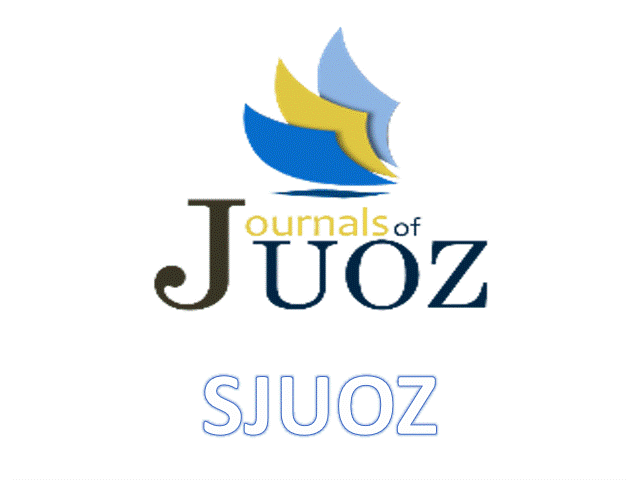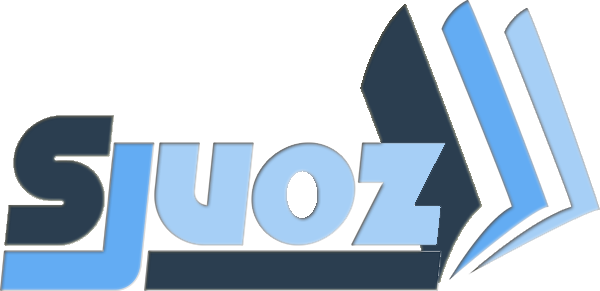One-Pot Synthesis, Pharmacological Evaluation, Docking Study, and DFT Calculations for Selected Imidazolidine-2,4-Diones
DOI:
https://doi.org/10.25271/sjuoz.2018.6.4.541Keywords:
imidazolidine-2, 4-dione derivatives, Prostate cancer, computational study, Energy, biological activityAbstract
The title compounds with different 5-substituted imidazolidine-2,4-dione were synthesized through a solvent-free reaction. Imidazolidine-2,4-dione derivatives are found to be an active pharmacophore for design and development of various bioactive lead compounds. Positive values of energy obtained for compound 1and 3, while a negative value for compound 2 was calculated by DFT in Gaussian. keto-enol tautomerism was supported by energy values and indicated the most stable tautomeric form. The biological evaluation has been supported by docking studies using molecular operating environment program to show binding with androgen receptor.
Supplementary Materials: https://sjuoz.uoz.edu.krd/suppma
Downloads
References
Becke, Axel D. (1993). Density‐functional thermochemistry. III. The role of exact exchange. The Journal of chemical physics, 98(7), 5648-5652.
Bisello, Annalisa, Cardena, Roberta, Rossi, Serena, Crisma, Marco, Formaggio, Fernando, & Santi, Saverio. (2017). Hydrogen-Bond-Assisted, Concentration-Dependent Molecular Dimerization of Ferrocenyl Hydantoins. Organometallics, 36(11), 2190-2197.
Cheng, Cheng-Kuo, Wu, Jender, Liu, Yuan, Lee, Tong-Sheng, Kang, Shuo-Jhen, Sheu, Ming-Thau, & Lee, Wen-Sen. (2008). Structure and anti-proliferation function of 5, 5-diphenyl-2-thiohydantoin (DPTH) derivatives in vascular endothelial cells. Vascular pharmacology, 48(2-3), 138-142.
Colacino, Evelina, Lamaty, Frédéric, Martinez, Jean, & Parrot, Isabelle. (2007). Microwave-assisted solid-phase synthesis of hydantoin derivatives. Tetrahedron letters, 48(30), 5317-5320.
Dewar, Michael JS, Zoebisch, Eve G, Healy, Eamonn F, & Stewart, James JP. (1985). Development and use of quantum mechanical molecular models. 76. AM1: a new general purpose quantum mechanical molecular model. Journal of the American Chemical Society, 107(13), 3902-3909.
Etter, Margaret C. (1990). Encoding and decoding hydrogen-bond patterns of organic compounds. Accounts of Chemical Research, 23(4), 120-126.
Frisch, M. J., Trucks, G. W., Schlegel, H. B., Scuseria, G. E., Robb, M. A., Cheeseman, J. R., . . . Fox, D. J. (2016). Gaussian 16 Rev. B.01. Wallingford, CT.
Gao, Wenqing, Bohl, Casey E, & Dalton, James T. (2005). Chemistry and structural biology of androgen receptor. Chemical reviews, 105(9), 3352-3370.
Ghanbari, Mohammad M, Roohi, Zahra, & Safari, Javad. (2014). One-pot synthesis of imidazolidine-2-thiones, hydantoins and thiohydantoins under solvent-free and grinding conditions. Open Access Library Journal, 1(07), 1.
Heras-Vazquez, Francisco JL, Clemente-Jimenez, Josefa M, Martinez-Rodriguez, Sergio, & Rodriguez-Vico, Felipe. (2008). Optically pure α-amino acids production by the “Hydantoinase Process”. Recent patents on biotechnology, 2(1), 35-46.
Katritzky, Alan R, Strah, Sonja, & Belyakov, Sergei A. (1998). The preparation of functionalized amines and amides using benzotriazole derivatives and organozinc reagents. Tetrahedron, 54(25), 7167-7178.
Law, Vivian, Knox, Craig, Djoumbou, Yannick, Jewison, Tim, Guo, An Chi, Liu, Yifeng, . . . Neveu, Vanessa. (2013). DrugBank 4.0: shedding new light on drug metabolism. Nucleic acids research, 42(D1), D1091-D1097.
Li, Jie Jack. (2010). Name reactions: a collection of detailed mechanisms and synthetic applications: Springer Science & Business Media.
Nefzi, Adel, Giulianotti, Marc A, & Houghten, Richard A. (2000). Solid-phase synthesis of branched thiohydantoin benzimidazolinethiones and branched thiohydantoin tetrahydroquinoxalinediones. Tetrahedron Letters, 41(14), 2283-2287.
Nique, François, Hebbe, Séverine, Peixoto, Christophe, Annoot, Denis, Lefrançois, Jean-Michel, Duval, Eric, . . . Mollat, Patrick. (2012). Discovery of diarylhydantoins as new selective androgen receptor modulators. Journal of medicinal chemistry, 55(19), 8225-8235.
Pereira de Jesus-Tran, K., Cote, P. L., Cantin, L., Blanchet, J., Labrie, F., & Breton, R. (2006). Comparison of crystal structures of human androgen receptor ligand-binding domain complexed with various agonists reveals molecular determinants responsible for binding affinity. Protein Sci, 15(5), 987-999. doi: 10.1110/ps.051905906
Safari, J, Naeimi, H, Ghanbari, MM, & Fini, O Sabzi. (2009). Preparation of phenytoin derivatives under solvent-free conditions using microwave irradiation. Russian journal of organic chemistry, 45(3), 477-479.
Safari, Javad, Moshtael Arani, Naimeh, & Ramezan Isfahani, Anousheh. (2010). Ultrasound‐enhanced Green Synthesis of 5, 5‐Diphenylhydantoin Derivatives Using Symmetrical or Unsymmetrical Benzils. Chinese Journal of Chemistry, 28(2), 255-258.
Safi, Zaki S, Al Hasanat, Subhia J, & Wazzan, Nuha A. (2018). DFT investigation of the amino/imino proton transfer process of 2-amino-2-oxazolin-4-one in gas phase and solution. Journal of Theoretical and Computational Chemistry, 17(01), 1850004.
Safi, Zaki Sulieman. (2012). Theoretical density functional study of gas-phase tautomerization and acidity of 5-methylhydantoin and its thio derivatives. European Journal of Chemistry, 3(3), 348-355.
Tikhonov, Denis B, & Zhorov, Boris S. (2017). Mechanism of sodium channel block by local anesthetics, antiarrhythmics, and anticonvulsants. The Journal of general physiology, 149(4), 465-481.
Ware, Elinor. (1950). The chemistry of the hydantoins. Chemical Reviews, 46(3), 403-470.
Zhang, Mao, Liang, Yu-Ru, Li, Huan, Liu, Ming-Ming, & Wang, Yang. (2017). Design, synthesis, and biological evaluation of hydantoin bridged analogues of combretastatin A-4 as potential anticancer agents. Bioorganic & medicinal chemistry, 25(24), 6623-6634.
Zhang, Xuqing, Allan, George F, Sbriscia, Tifanie, Linton, Olivia, Lundeen, Scott G, & Sui, Zhihua. (2006). Synthesis and SAR of novel hydantoin derivatives as selective androgen receptor modulators. Bioorganic & medicinal chemistry letters, 16(22), 5763-5766.
Zuo, Minzan, Xu, Xi, Xie, Zhouling, Ge, Raoling, Zhang, Ziyu, Li, Zhiyu, & Bian, Jinlei. (2017). Design and synthesis of indoline thiohydantoin derivatives based on enzalutamide as antiproliferative agents against prostate cancer. European journal of medicinal chemistry, 125, 1002-1022.
Downloads
Additional Files
Published
How to Cite
Issue
Section
License
Copyright (c) 2018 Zanko S. Jawhar, Hiwa O. Ahmad, Asmaa A. Haydar, Halala A. Abdullah, Sawza A. Mahamad

This work is licensed under a Creative Commons Attribution 4.0 International License.
Authors who publish with this journal agree to the following terms:
- Authors retain copyright and grant the journal right of first publication with the work simultaneously licensed under a Creative Commons Attribution License [CC BY-NC-SA 4.0] that allows others to share the work with an acknowledgment of the work's authorship and initial publication in this journal.
- Authors are able to enter into separate, additional contractual arrangements for the non-exclusive distribution of the journal's published version of the work, with an acknowledgment of its initial publication in this journal.
- Authors are permitted and encouraged to post their work online.








